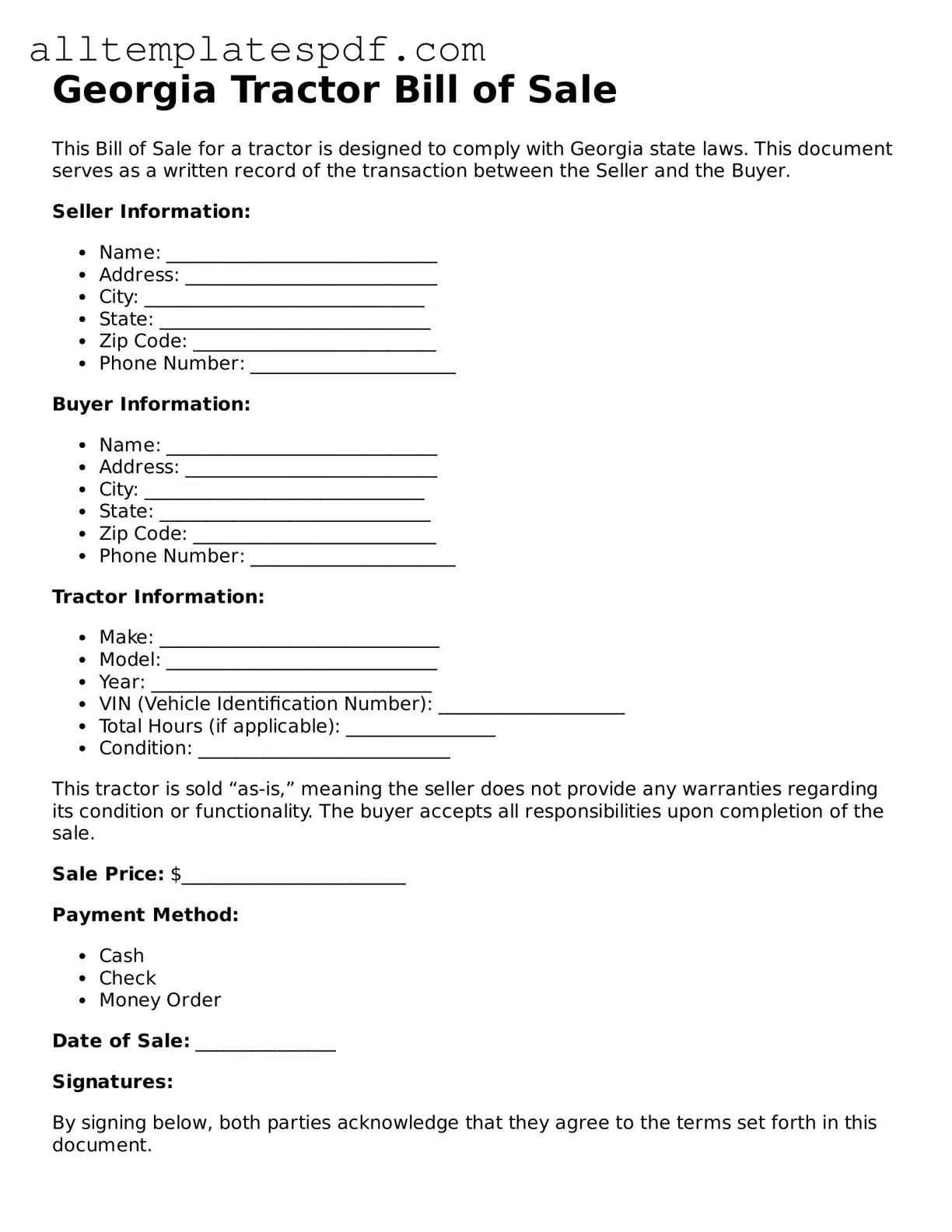Filling out the Georgia Tractor Bill of Sale form can seem straightforward, but many people make common mistakes that can lead to complications down the line. One of the most frequent errors is failing to provide complete information about the tractor being sold. Buyers and sellers alike should ensure that all details, including the make, model, year, and Vehicle Identification Number (VIN), are accurately recorded. Omitting any of this information can create confusion and may even lead to disputes later.
Another common mistake involves not including the correct purchase price. It’s essential to state the exact amount that the buyer agrees to pay for the tractor. If this figure is missing or incorrect, it can affect tax calculations and create issues with future ownership transfers. Both parties should double-check this detail to avoid any misunderstandings.
Additionally, many people neglect to sign the form. While it might seem obvious, both the seller and the buyer must sign the Bill of Sale to validate the transaction. Without signatures, the document lacks legal weight, which can complicate matters if either party needs to prove ownership or if disputes arise.
Another mistake often seen is the failure to date the document. A Bill of Sale should always include the date of the transaction. This date serves as a reference point for when the ownership officially changes hands. Without it, there could be ambiguity regarding the timeline of the sale.
People also frequently overlook the importance of keeping a copy of the completed Bill of Sale. After filling out the form, it’s crucial for both parties to retain a copy for their records. This document serves as proof of the transaction and can be vital if questions arise in the future regarding ownership or the terms of the sale.
Finally, some individuals mistakenly assume that a Bill of Sale is not necessary for a tractor transaction. In Georgia, while not legally required, having a Bill of Sale is highly recommended. It provides a clear record of the sale and protects both the buyer and seller. Ignoring this step can lead to complications, especially if there are any disputes regarding the sale later on.
